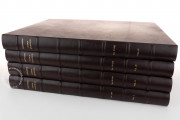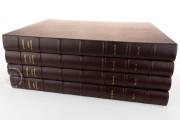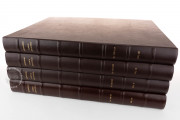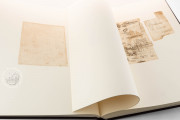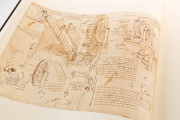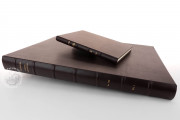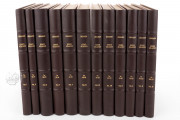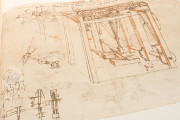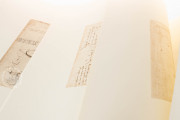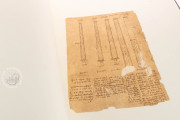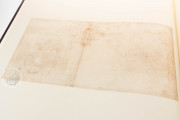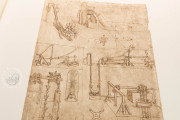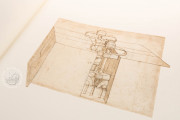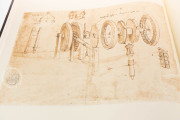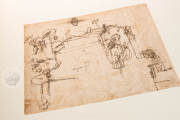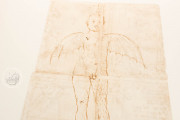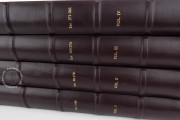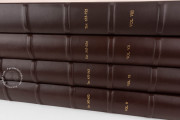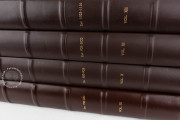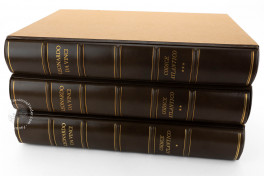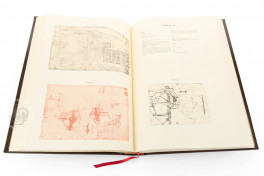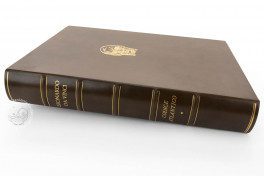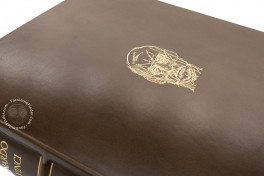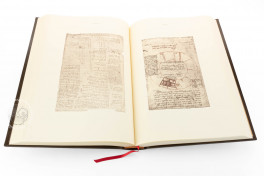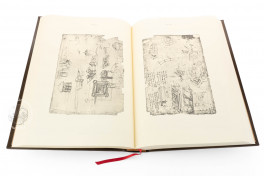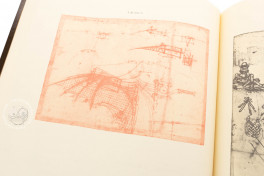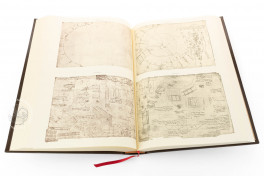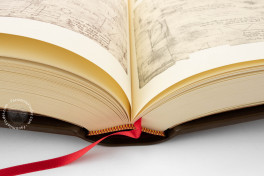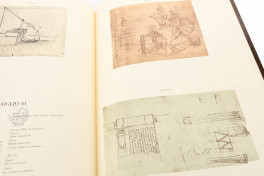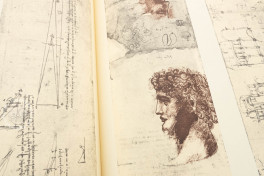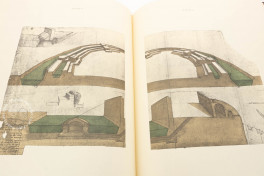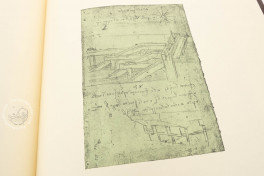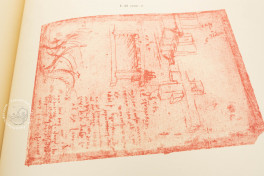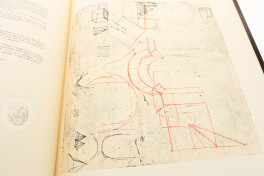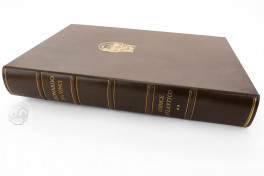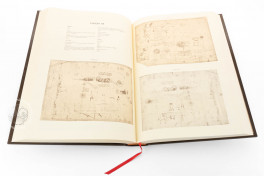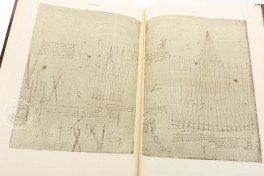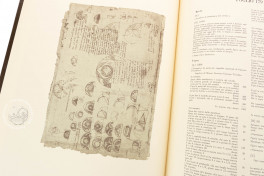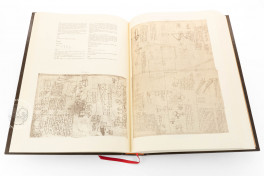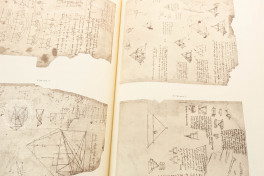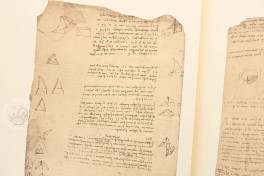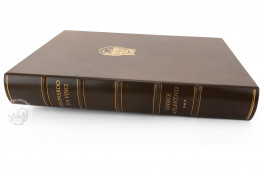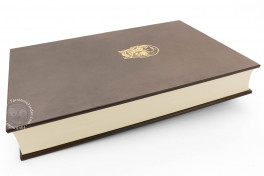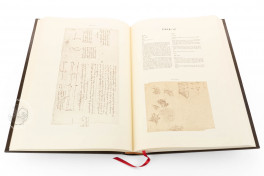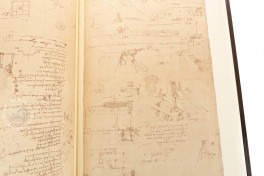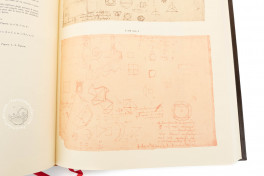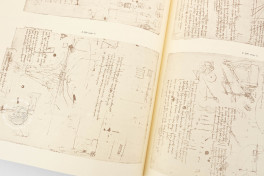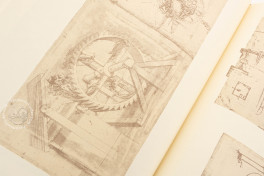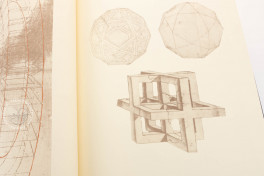The Codex Atlanticus represents the most extensive compilation of Leonardo da Vinci's sketches and writings. This monumental work, unparalleled in its breadth, was gathered into 12 volumes after Leonardo's death. The Codex Atlanticus book stands as the largest and most comprehensive collection of Leonardo's work, spanning over four decades of innovation. It encompasses 1,119 sheets, often filled on both sides, crafted from 1478 to 1519. Their content ranges from aeronautics to armaments, music to mathematics, and botany to engineering.
Leonardo Codex Atlanticus: Da Vinci's Most Extensive Collection of Sketches
The codex's old cover bears the inscription "Machine and Art Drawings, Secrets and Other Things of Leonardo da Vinci, Collection of Pompeo Leoni." The collection was indeed curated in the late sixteenth century by the sculptor Pompeo Leoni, who consolidated Leonardo's dispersed papers—recovered from the heirs of Giovan Francesco Melzi, Leonardo's pupil—into two volumes: the Codex Atlanticus, focusing on scientific and technical matters, and now housed at the Biblioteca Ambrosiana in Milan, and the so-called Windsor collection, devoted to art and anatomy.
Codex Atlanticus Book: Named After Geographic Atlases
The term Atlanticus derives from the codex's resemblance in size to that of contemporary geographic atlases. Indeed, when compiling Leonardo's works at the end of the sixteenth century, Leoni pasted them onto large sheets of paper in the same format as geographic atlases. The codex opens with an intriguing depiction of a naval artillery piece equipped with sixteen cannons, while the facing page depicts instruments for measuring distances, either in miles and in the number of steps. Notably, this section includes a rare instance of Leonardo writing conventionally from left to right, deviating from his typical mirror writing. Modern Codex Atlanticus facsimile editions preserve these oversized pages in their original atlas format, allowing collectors to experience Leonardo's genius firsthand.
Da Vinci Codex Atlanticus: Leonardo's Visionary Inventions and Designs
Within the pages of the Codex Atlanticus lie Leonardo's visionary concepts, from his famed flying machine and parachute to hydraulic pumps, armored vehicles, and even conceptualizations for grand artistic works like The Adoration of the Magi, Leda and the Swan, and the Battle of Anghiari. The da Vinci Codex Atlanticus contains some of Leonardo's most celebrated drawings, from flying machines to architectural plans. Among the most renowned in the codex are the pages featuring Leonardo's examination of a horse intended for the mural artwork known as the Battle of Anghiari destined for Palazzo Vecchio in Florence, a project that the artist never accomplished.
In addition to its remarkable technical and engineering marvels, the codex also encompasses Leonardo's investigations into the flight patterns of birds, accompanied by intricate illustrations depicting their motions. It also holds his instructive fables and a page showcasing what could be considered his personal résumé, directed towards Lodovico il Moro, Duke of Milan. Moreover, the collection encompasses designs for grand yet unbuilt equestrian statues honoring Francesco Sforza and Gian Giacomo Trivulzio, as well as architectural schemes for Milan's urban transformation and the French royal estate at Romorantin.
Codex Atlanticus: From Napoleon's Seizure to Milan's Return
The nobleman Marquis Galeazzo Arconati bequeathed the Codex Atlanticus to the Biblioteca Ambrosiana in 1637. In a twist of history, Napoleon's forces seized the codex during their conquest of Milan in 1796, transporting it to Paris, where it remained until the Congress of Vienna in 1815 mandated the restitution of artworks appropriated by Bonaparte, leading to the codex's return to its Italian home. Today, the Codex Atlanticus Leonardo remains at the Biblioteca Ambrosiana in Milan, while premium facsimile reproductions make this Renaissance treasure accessible worldwide.
We have 2 facsimiles of the manuscript "Codex Atlanticus":
- Codice Atlantico facsimile edition published by Art Market, 1990
- Il Codice Atlantico facsimile edition published by Giunti Editore, 1973


